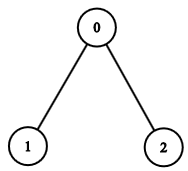---category_name: hardproblem_code: ZUBHTREEproblem_name: 'F - Huge Number of Trees'languages_supported:- C- CPP14- JAVA- PYTH- 'PYTH 3.5'max_timelimit: '2'source_sizelimit: '50000'problem_author: zubaerkhproblem_tester: nulldate_added: 12-11-2017tags:- zubaerkhtime:view_start_date: 1517085000submit_start_date: 1517085000visible_start_date: 1517085000end_date: 1735669800current: 1525454409is_direct_submittable: falselayout: problem---All submissions for this problem are available.Hermione needs to solve a tough homework problem in Arithmancy class. Professor Vector was discussing trees for some time and now he gives the problem: Say, there are **n** + 1 nodes numbered 0, 1, 2, ..., **n**. Node 0 is always the root of the tree. How many different trees can be formed using the remaining **n** nodes so that all leaves have the same _depth_ and the _degree_ of each non-leaf node is at least **d**? Here, _depth_ of a node **u** is the number of edges we need to traverse from the root (Node 0) to reach **u**. A tree is different from another tree if there exists at least one pair of nodes **(u, v)** for which an edge between **u** and **v** is present in one tree, but absent in the other one. Hermione wants your help to write a program to solve this problem.Note that by _degree_, we mean the total number of neighbors, not just the number of children.### Input- The first line of the input contains a positive integer, **T** which denotes the number of test cases.- For each case, there is one line of input containing two integers: **n** and the minimum degree of each non-leaf node, **d**.### OutputFor each test case, print "Case i: ", and then the answer (mod 109 + 7), where i is the testcase number, 1-indexed.### Constraints- 1 ≤ **T** ≤ 2000- 2 ≤ **n** ≤ 500- 2 ≤ **d** ≤ 10### Example<pre><b>Input:</b>32 23 24 2<b>Output:</b>Case 1: 1Case 2: 1Case 3: 13</pre>### Explanation**Testcase 1:** The only valid tree is shown below:**Testcase 2:** The only valid tree is shown below:**Testcase 3:** The 13 different valid trees are as shown below: